Footer: what kind of fabric is it and what is it like?

Fleece, bike, jersey, flannel - we roughly understand what this is about. And suddenly - "footer". Feed, forage, chuck, grub? There is only one translation related to our topic - "lining". And oddly enough, we are well familiar with the meaning of this word, because warm, pleasant to the body sweatshirts, leotards, home clothes "on a bike", children's clothes - this is the footer.
To understand the origin of the term, the composition and methods of production, the scope and types of footer is the task of this article.

What it is?
Very soft, delicate, pleasant to the touch cotton fabric - that's what a footer is, in essence. A comfortable fit to the body is provided by the wrong side with pile of different lengths. While the front side is quite smooth, reminiscent of a curly surface. The back fleece can be dense fleece or looser velor, but the material will still be warm and cozy. It warms up no worse than natural woolen things, but at the same time it does not prick and does not wear out so quickly.
Consider where the footer fabric came from. It is known for certain that the word is German (Futter), but, most likely, the translation is not entirely accurate: this is not a lining fabric as such. Rather, we are being asked to pay attention to the lining, seamy side. After all, it is she who, with her softness, delicacy, attracts attention.



Country of origin is unknown. It can be India, Egypt, and even the Central Asian republics of the USSR. In a word, where cotton is grown.However, it is not clear why the German name stuck. Presumably, the fabric first appeared in the 30s of the XX century. Although, perhaps, there were some analogues much earlier.
In any case, thanks to the fact that a description of the production technology has appeared, we are happy to use this practical fabric. And the technology is really interesting for its special method of weaving threads: a barely noticeable scar on the front side and footer threads attached to the base from the back side. And they are attached with loop broaches.
The footer cloth is created, of course, from the cultivation of cotton. Heat-loving cotton can only ripen where there is a lot of sun. And at the moment of ripening, the cotton boll with soft fibers opens up. The cotton fibers are collected. They undergo lengthy processing of cleaning, sorting depending on the length, pressing, combing and finally yarn.


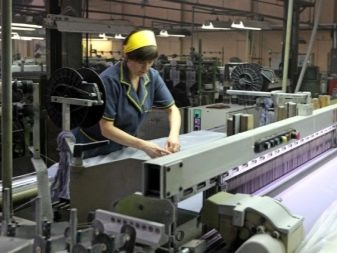

The peculiarity of the fabric is due to the fact that two types of thread are used on the machines:
- ordinary, so-called soil, from which a strong base is woven for the front side;
- loose, soft, slightly twisted (footer), designed to create a fleece on the wrong side.
The fabric is not woven according to the principle of the horizontal arrangement of the threads (the warp is the weft), but is knitted. That is why it is more fair to call it not a fabric, but a canvas. According to the technology, a weakly twisted thread is knitted into the cross-knitted or warp-knitted soil from the inside out. The lacing yarns obtained as a result of knitting are left in the form of loops or are piled of different lengths. Knitted with loop broaches, the threads are securely attached to each other, but stretch well, like any knitted thing.


Composition
The assumption that the footer is 100% cotton is rather wrong. Cotton fibers are the main component of the material. But for elasticity and increasing strength, for warmth, other fibers are also added to the composition.
Wool
The garment gets warmer, but natural woolen thread can be prickly and therefore unpleasant to the body. In addition, both the clean lining and the wool shrink heavily. Such a mixed fabric is more often used precisely as a lining or as a front fabric when sewing coats, raincoats and jackets.


Viscose
Provides increased strength to cotton fibers. The canvas, pleasant to the touch, has a beautiful appearance with shine, and a reasonable price. But also has a high percentage of shrinkage.
Polyester
Synthetic fabric, which means more wear-resistant. A mixture of cotton and polyester will make things more practical and durable. But here it is important to understand that if the percentage of polyester in the composition of the product exceeds 20%, then this is no longer a footer. Such things will not allow air to pass through. It will be uncomfortable to wear them.




Lycra (elastane)
Perhaps the most successful supplement for sports, children's and household items. Lycra content should also not exceed 20%. This amount is sufficient for the elasticity and durability of the garment. The material becomes elastic, fits the body beautifully, but does not hinder movement. Even with prolonged wear, things retain their original appearance. They do not form pills and do not require ironing. The optimum content of elastane is not more than 5%. In this case, the natural properties of cotton are preserved, and the risk of allergic reactions to synthetic fibers is reduced.
Basically, the higher the percentage of impurity in cotton, the rougher the linen becomes. It's not that nice tactilely. Therefore, outerwear that does not come into direct contact with the body is usually sewn from such material.




The density of the footer is 170-350 g / m2. It also depends on the percentage of added fiber.
Advantages and disadvantages
Before drawing conclusions about the merits and demerits of the footer, Let us turn to buyers who have left their feedback on products on various sites and forums.
- Many people write that they bought things from a footer to wear at home, as it is cold in the house in winter.And we did not regret it - the material perfectly retains heat.
- Young mothers praise clothes for babies: even with constant rubbing of sliders on the floor, scuffs are invisible on them. The knees on the panties did not turn into bubbles, as the thing keeps its shape perfectly. After numerous washes, sliders and blouses are still soft and retain their appearance. Even if the child sweats, allergic reactions do not appear on the skin, because the footer absorbs all the moisture.


- Professionals and amateur athletes say that it is convenient to run and exercise in such tracksuits in cool weather: the body breathes, the footer with lycra fits the body perfectly. The feeling of comfort is very pleasant. Even after using for more than a year, the item has not lost its original shade.
- Those who work outdoors or in cold rooms are satisfied with the comfort of their clothes: they do not hinder movement.
- In the world of synthetics, allergy sufferers who have problems with these particular materials find it very difficult to live. Therefore, the footer is a little salvation from the problem. 100% cotton protects against attacks. The main thing is to carefully study the composition of the material before buying, so as not to buy a mixed thing.

- Professional tailors and amateurs warn that clothes from a footer shrink very strongly, therefore it is advised to wash and iron the fabric before cutting so that it shrinks immediately. At the same time, they write that it is not difficult to work with fabric when sewing.
- Most buyers note that in order to avoid the problem of shrinkage, when buying ready-made things, you need to buy them one or two sizes larger.
- Everyone says that footer things are inexpensive, and therefore almost everyone can afford them.
- The reason for the cheapness is not only in the material, but also in the manufacturer: a large segment of things is produced in the country where we live. And their quality is up to the mark.
- Some buyers have had a problem with unscrupulous manufacturers (or sellers) when buying things over the Internet. At the very first wash on a delicate cycle at 30 degrees, things shed heavily. And since they were washed with other clothes, everything was in the cannon from the footer.



Well, now let's summarize.
- From the reviews it becomes obvious that since the footer is a natural (or almost natural) material, it shrinks strongly when washed. This is a minus.
- The second disadvantage is not very good stain resistance. The result is a loss of paint after washing.
- The third is a violation of the declared qualities due to an excess of the percentage of blended fibers.
- Fourth, it requires a careful attitude during washing (which will be discussed below).
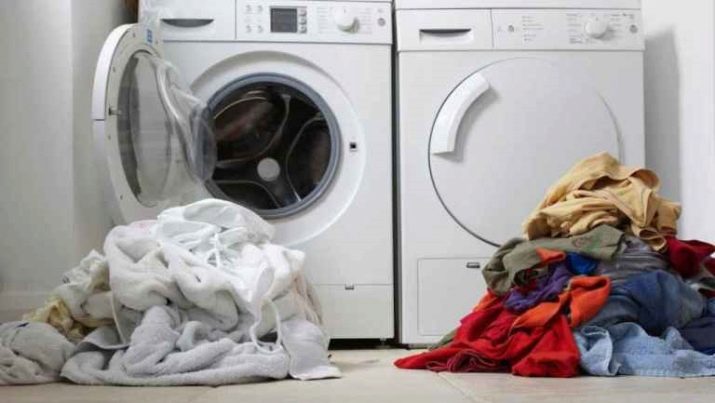
Dignity
What about the merits of such things - they are inherent in most natural materials.
- When buying, we focus on tactile sensations. And here they are pleasant: soft fabric that can keep you warm. This is facilitated by the seamy side with a short or long fuzz.
- The strength is due to the weaving technique. The buyer himself can choose the material of different strength levels.
- Ability to maintain shape, return to its original state after stretching. The material is resistant to deformation.
- The essence of the lining weave and the structure of the fibers allows air to flow freely to the skin, maintaining good breathability. The stuffiness in such clothes is not terrible.
- Good moisture wicking ability. With active sweating or infant problems, the liquid will not remain on the body, but will be absorbed into the clothing. All that remains is to quickly change things.




- They say "no demolition" about such material. It is difficult to break and does not form pills or puffs.
- With 95-100% cotton composition, things do not cause allergies (if they are not allergic to cotton fibers). There is no unpleasant smell and no toxic substances are released.
- Initially, cotton fibers are processed under environmental conditions: they are not soaked in bleach, they are not degraded in chemicals. This allows us to talk about the environmental friendliness of the material, naturalness and safety.
- Minor washing features are covered by the ease of ironing and storage. There are no difficulties in leaving.
- Even home craftswomen will have no difficulty in sewing and processing things from a footer. Use a knit needle, double stitch or zigzag stitch to sew cozy household items or outerwear.
- Linen or high-quality things cannot be called cheap, but still the price is quite affordable for good warm clothes.

Views
The production technology of the looped material determines the production of three types of fabric.
- Single strand weave from the finest cotton. The canvas turns out to be thin. One of the best materials for newborn babies' clothes, as well as for comfortable underwear.
- 2 broaching threads are woven into a double-strand footer from the back side. Viscose thread or synthetic fibers are often added to this type. The medium density of the fabric is popular for sewing home and children's clothing, warm underwear, sweatshirts, tracksuits, trousers. From the inside, the material resembles a terry cloth, and it has a second name frenchterry (terry knitwear). The clothes are warm, but they look too bulky and bulky. When Lycra is added, the material becomes elastic.




- The three-thread blade has a long pileand the material itself becomes thick and very warm. In addition to the aforementioned elastane, polyester, viscose, more expensive Italian or cheaper Turkish knitwear "Footer with 3-thread lurex" is popular among buyers.
If the broaching threads form loops from the inside out, then such a footer is called "3-thread loop". If a combed machine with special needles passes through, processing the purl threads in a special way, then a "3-thread bouffant" is obtained. This is the warmest footer, therefore it is used in sewing overalls and thermal underwear. If the fleece is thin, then the fabric looks like a bike, if thick, it looks like artificial fleece.




But the technology itself depends on the quality of the feedstock.
- The best cotton grade singe (PE) has a fiber length of about 35-70 mm. Singing is distinguished by its smoothness, lack of "gun". High quality of a single-thread fabric, high price, fluffy, stable pile on the seamy side - this is what gives the use of singing in the manufacture of footers. Such material is much less wrinkled, does not cough (does not frizzy), is silky. A variation of this variety is compact singing - cotton of the highest quality, which does not shrink, does not form pellets (does not subject to peeling), and is wear-resistant.


- Ring or card - cotton with a score of 4 on a five-point scale. The length of the fibers is 27-35 mm, with a small "fluff". It gives the canvas a slight roughness.
- Open, open end, O / E - the lowest quality cotton used for making a footer. The length of the fibers is 20-27 mm (cotton wool is made from fibers of shorter length). Short fibers are the reason for the fluffiness of the linen. To get rid of it, it is treated with special proteins - catalysts (enzymes). The use of short fibers also resulted in lint on the front side and fleece, which rolls off rather quickly from the inside. But on the other hand, low quality - low price.
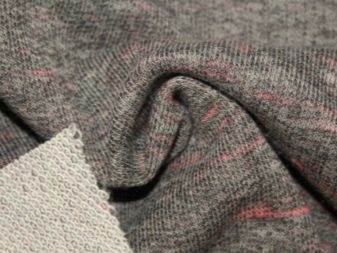

When buying fabrics or ready-made things, you should pay attention to the "quality" line: this is exactly how it will be indicated from which raw materials the footer is made (and other cotton fabrics).
The knitted fabric is also different in appearance.
- The classic will be executed in a vertical rib (like a wader).
- A diagonal hem, resulting from using a different weaving method, will resemble denim (jeans).
- As a rule, the footer is solid, but in different colors. There is a variety, but gray melange is very often used for sportswear, and ecru is used for thin knitwear.
- To diversify the colors of the products, digital direct printing is used to apply a picture.


Comparison with other materials
To understand the difference between the footer and other cotton and synthetic fabrics that are similar in appearance, we will give them a brief description.
Velours
Soft pile fabric made from pure wool. But looped velor knitwear can be synthetic, cotton, silk or woolen, or from several types of fibers. Therefore, the composition of the canvas will be of fundamental importance. The pile can be perpendicular to the base or smoothed over the pattern, embossed, and so on.


Interlock
Knitted double-sided fabric, but smooth on both sides. The special weaving creates a structure in the form of an elastic band, which makes the fabric stronger and allows you to quickly recover its shape after deformation. 100% cotton (or with a small amount of other fibers), pleasant to the touch, warm and comfortable in it. Similar in properties to a footer. The difference is that it does not shrink after washing and is not as elastic.
Kashkorsa and knitwear-noodles
Created by knitting "front - purl" 2x2 (according to the principle of the English elastic band). Kashkorse as an elastic band is used in clothes (cuffs, necks, belts), knitwear-noodles are widely popular as a material for dresses, turtlenecks, sweaters, skirts, cardigans. 95% cotton and 5% spandex. The main property is excellent elasticity, which allows it to fit the body and often protect from the cold.



Kulirka
Smooth cotton jersey with added elastane (Lycra) for density and shape. Kulirny smooth surface is acquired through stocking knitting: thin dense pigtails on the front side and "brickwork" - on the wrong side. Pigtails can be stretched in width, almost not in length. The canvas is lightweight, breathable, almost wrinkle-free. T-shirts, undershirts, nightgowns, light pajamas, children's clothing - that's what I sew from this popular fabric. There is a one-color one-color dyed, with a pattern or print, knitted from multi-colored threads (melange). Does not shrink, almost does not wrinkle.
Kulirka with lycra (suprem)
Silky high quality jersey. The fabric is breathable and highly stretchable. That is why underwear and light summer clothes are sewn from it.

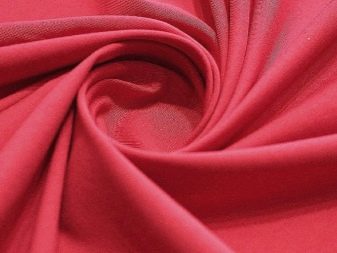
Pique
Cotton or synthetic fabric with a complex weave, like a honeycomb. A prime example is waffle towels. Plain dyed shirts for polo, golf, tennis are sewn from pique. They also produce piqué with fleece. In addition to honeycombs, you can find diamonds, squares, a scar, but there is almost no stripe. The material is durable, almost does not wrinkle, it is well erased.
Ribana (eraser, elastic band 1x1)
Highly elastic elastic jersey, similar to kashcors, but thinner. Both sides can be called obverse. Thanks to the addition of lycra, it stretches well across the canvas. Cuffs, necks, turtlenecks, pajamas and similar clothing, hats and underwear - this segment was taken by the ribana from the kashkorse. The fabric must not be twisted or dried in the sun.
Fleece
Unstructured felted polyester produced using a special technology. Very nice soft synthetic jersey. Breathable, hypoallergenic, dries quickly, elastic, does not shrink, keeps its shape well, strong, wear-resistant. For adults, they are used for sewing almost any type of clothing, hats and scarves, as well as lining. Not recommended for children to use as underwear.



Scope of application
Nowhere is there a mention of the fact that the footer is used, for example, for sewing covers or in medicine. This is understandable. One of the main properties is that the footer gives warmth to its owner. It is for this that he is appreciated in the light industry.
- For newborns, diapers are sewn from thin linen. For babies and older children - rompers, mittens, blouses, overalls, undershirts, trousers, pajamas, dresses and many other warm and comfortable things.
- Home clothes from singing, ring and carde suit both men, women and children.
- Fleece sportswear for the cold street or thin for the gym is prized for its durability and comfort, as well as its ability to breathe and absorb moisture.
- Maternity dresses and suits are warm, elastic and safe.
- Everyday wear is easy care and comfort.

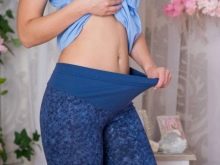

Care advice
If you want the delicate footer to retain its properties for a long time, try to properly care for your favorite things: follow the recommendations on the product label. If it is not there, follow the general rules.
- Knitted items are washed by hand or in the washing machine on a gentle cycle.
- For a thin footer, a water temperature of 30 degrees is recommended, for a medium - 40, for a thick one - 50.
- Before starting the wash, fasten all the buttons and buttons. The purpose of the manipulations is not to damage the fittings to the looped fabric and delicate fleece. If it is not possible to hide the fleece (for example, when washing diapers), then it is advisable to wash such things separately or put them in a special net or pillowcase.
- To wash children's clothes, you need to use soft powders or gel.

- Colored items are washed with special powder and liquid detergents.
- This fabric should not be boiled.
- You can wring out things in a typewriter.
- For drying, use natural conditions without access to sunlight.
- If the thing is ironed from the front side, then it is done in the "cotton" mode, if from the wrong side - in the "silk" mode.
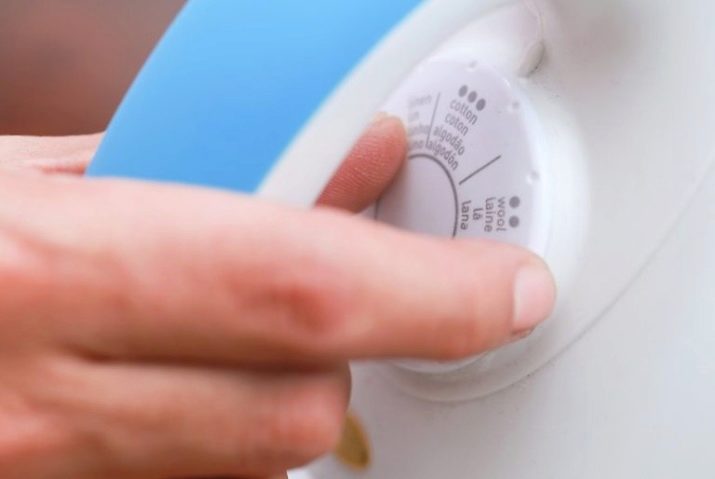
Don't buy a cheap footer. If you want to learn from the mistakes of others, and not from yours, get acquainted with the conclusions of the experts.
- A cheap footer made from 90-100% cotton is nonsense. Pay attention to the density immediately. For sweatshirts and similar items, the normal weight is 310-350 g / m2.
- Cheap jersey can be due to the large amount of synthetics. Anything below 90% should already alert you. Although most often on the labels is: 80% cotton and 20% something else.
- Only a crudely crafted open end can be cheap. If these are work clothes that are comfortable for you, then you decide whether to buy such a thing. But its quality and service life is poor.
- If a cheap dye is used, then the item will be cheaper. The result is instant shedding after washing and loss of appearance.
- The use of glued cotton wool instead of natural fleece is the fifth reason for the reduction in the price of goods. Soon this "fleece" will begin to stick to the body and things, and after washing, in general, will disappear.

Footer is indeed a very good jersey. You should not be disappointed in him buying a low-quality item.
For details on this type of fabric, see the video below.








